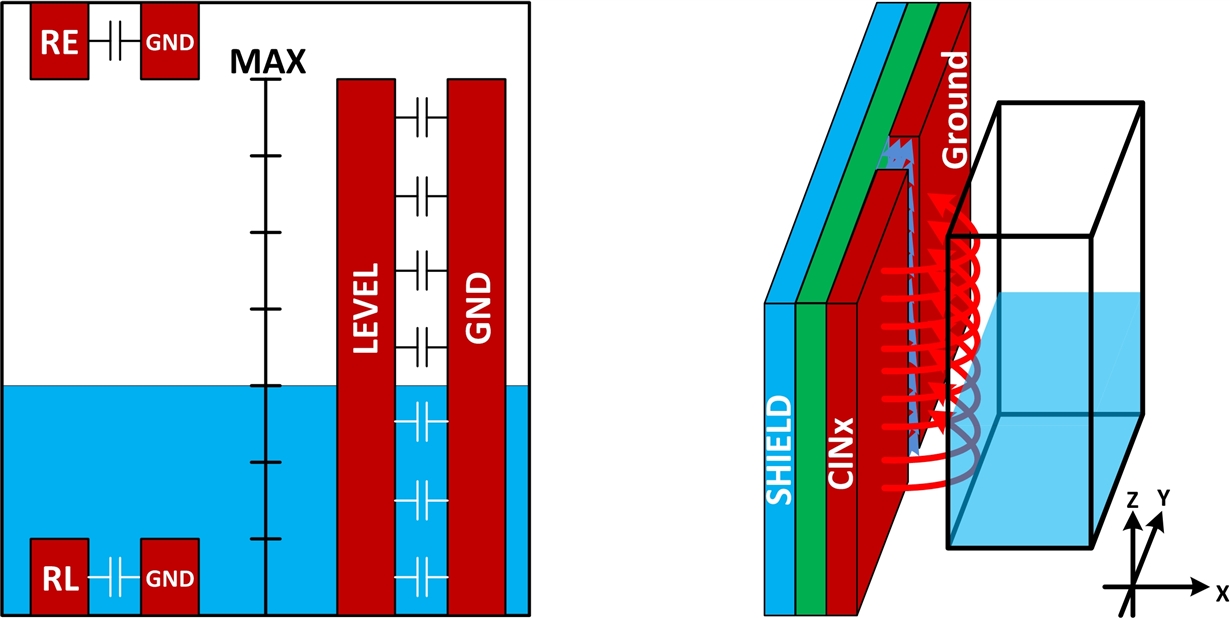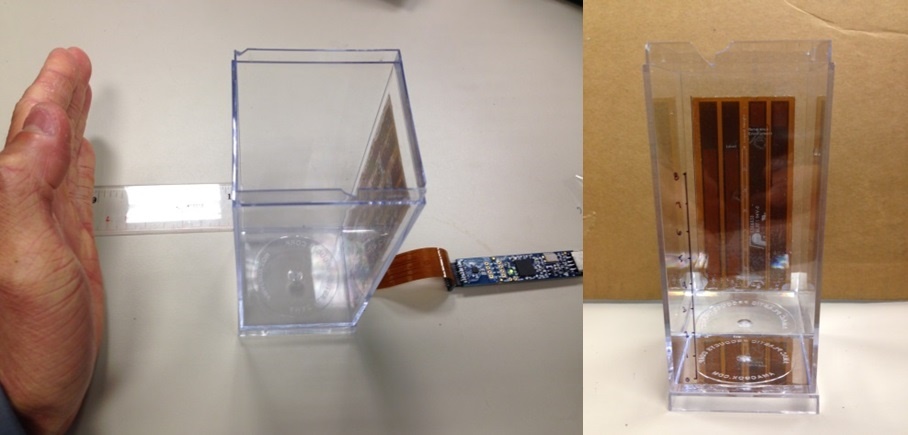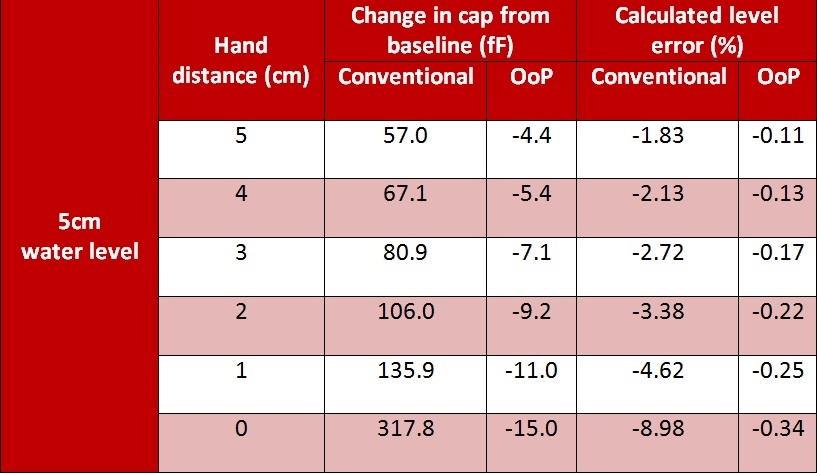SSZTCK0 june 2015 FDC1004
Jun 25, 2015
Various methods have been used to determine the liquid-level height in containers, but recently, capacitive sensing has become popular due to the accuracy and resolution of the measurements. If you have designed with capacitive-based liquid-level sensing, you may have experienced false measurement readings when you move your hand closer to your system. This is caused by the conventional capacitive technique’s limitations with robustness, especially with any external parasitic capacitance interference such as a human hand. As an example, think of a coffee maker that uses liquid level sensing to determine the amount of water required for each cup of coffee. To make the perfect cup, you need the right amount of water. If a person interacts with the coffee maker while it is running, the parasitic capacitance interference from the human body will disrupt the coffee mixture.
In this post, I’ll talk about the conventional method of liquid-level sensing, and a novel approach TI has come up with a called the out-of-phase (OoP) technique, employing the FDC1004 capacitance-to-digital converter. It provides the necessary barrier to minimize any interference, while maximizing the signal-to-noise ratio and overall robustness of the system.
Figure 1 shows the typical liquid-level sensing application setup.
 Figure 1 Liquid-level Sensing
Setup
Figure 1 Liquid-level Sensing
SetupThe Conventional Method
The conventional method uses the parallel fingers topology: one electrode driven with the excitation signal and a second electrode connected to ground (GND), as shown on the left in Figure 2. The issue with a GND-referenced electrode is that the water has a voltage potential difference. When the hand approaches the container with the liquid, an additional parasitic capacitance is introduced into the model and the self-body capacitance directly couples to the potential difference of the water. This results in false-measurement deviations and system inaccuracy.
 Figure 2 Conventional Method versus OoP Method
Figure 2 Conventional Method versus OoP MethodThe OoP Technique
The OoP technique relies on a symmetrical sensor layout, and also uses the shield drivers on the FDC1004 capacitance-to-digital converter in a unique way to counteract the effects of human-body capacitance and stabilize measurements. With the OoP technique, the liquid potential is kept constant during the excitation/drive phases by using a differential capacitive measurement, thus eliminating human-body capacitance effects from the measurements. Instead of using a GND electrode, the CINx electrode is paired with a SHLDy electrode. CINx and SHLDy have the same waveform but are 180 degrees out of phase; this is possible by setting the FDC1004 in a differential-mode configuration.
I collected hand-interference capacitance measurements with the capacitive-based liquid-level sensing TI Design reference design and compared it to the conventional method with electrodes the same size. Figure 3 shows the test setup, with the reference design on a container and connected to the FDC1004 evaluation module (EVM). Table 1 shows the capacitance measurements at a water-level height of 5cm, with the human hand a fixed distance away from the front of the container. When the hand is directly touching the container (a 0cm hand distance), the conventional method has a change in capacitance from the baseline reading (no hand present in the system) 20 times larger than the OoP technique. The calculated level absolute error dropped from about 9% to about 0.4% with the OoP technique. Over the full range of the system (0-8cm level heights), the overall absolute error of the OoP technique is about 0.5%.
 Figure 3 Test Setup with the Capacitive-based Liquid-level Sensing TI Design Reference Design
Figure 3 Test Setup with the Capacitive-based Liquid-level Sensing TI Design Reference Design

|
Robustness with any capacitive-based liquid-level sensing system is important for reliability and accuracy. The OoP technique mitigates the effect of any external parasitic capacitance compared to the conventional method. A sensor layout that is as symmetrical as possible will maximize the performance of the technique.
Additional Resources
- Learn more about capacitive sensing.
- Get started with TI’s “Capacitive-based liquid-level sensing” TI Design reference design.
- Start your design today with the FDC1004 EVM.
- Read more blog posts about capacitive sensing design.
- Search for answers and get help with your designs in the TI E2E™ Community Capacitive Sensing forum.